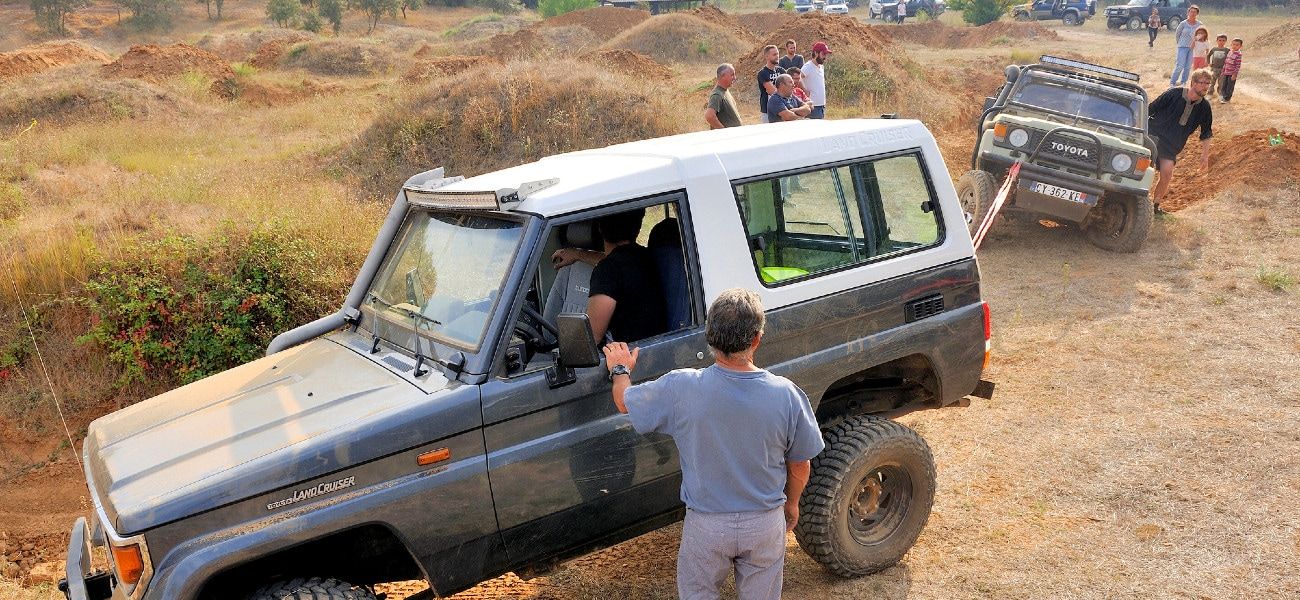If it hasn't happened to you yet, then it's only a matter of time – out on a trail, or camping remotely and you or one of your group twists an ankle, gets bitten by a spider, comes down with a fever or slips and bangs their head.
Having medical issues while hiking and camping is something we should all be prepared for, as even though Australia is a developed country with some of the best emergency services available, it is still huge and when you are off the beaten track it can take a long time to receive any help.
Having a first aid kit, even if you have no medical knowledge, should be essential for any hiker or camper. We have reviewed some of Australia's best first aids and compared them to take some guesswork out for you when you purchase this life-saving item.
| St John Personal First Aid Kit | Companion First Aid Kit - Adventure | Bob Cooper Survival Kit | FastAid Modular Survival Pack First Aid Kit |
|---|---|---|---|---|
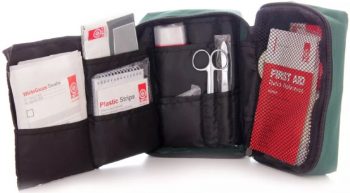 | best for hiking 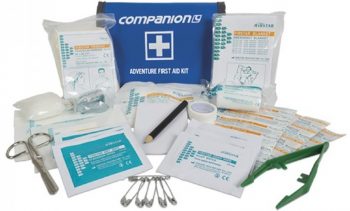 | 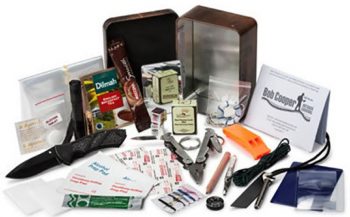 | Most CompONENTS  | |
17.5 x 13 x 8 cm | 19 x 15 x 13 cm | 13 x 9.5 x 4.5 cm | 31 x 24 x 11 cm | |
480 g | 280 g | 500 g | ?? |
Best Hiking First Aid Kits Australia
St John Personal First Aid Kit
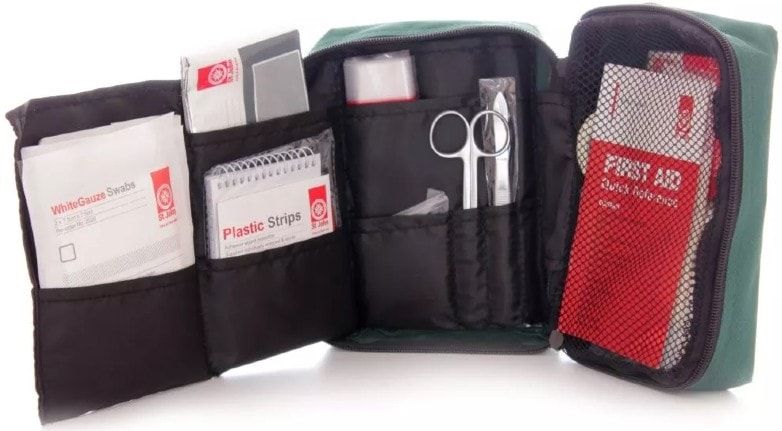
Best For Short Trips
The St John kit is a simple and fairly comprehensive hiking first aid kit that comes with most of the items you need to treat minor injuries. It comes in a small and compact kit that can open up and roll out into three basic compartments.
This is a first aid kit designed for minor wounds or stabilizing a patient until help arrives, but not much else. It includes a range of adhesive strips, bandages, gauze and tape, along with a shock blanket, latex gloves and some scissors.
What it doesn't include, surprisingly, is any anti-septic or anti-bacterial cream or solution for cleaning wounds. This means you can stop bleeding easily, but will have to return to civilization as soon as possible for proper care and wound maintenance.
Customer reviews are mixed because despite being a little basic, the kit weighs half a kilo. It's a great and relatively inexpensive option that is useful for leaving in your car or taking on short hikes.
However, if you are camping or backpacking for an extended time, you will want something more comprehensive.
Companion First Aid Kit – Adventure
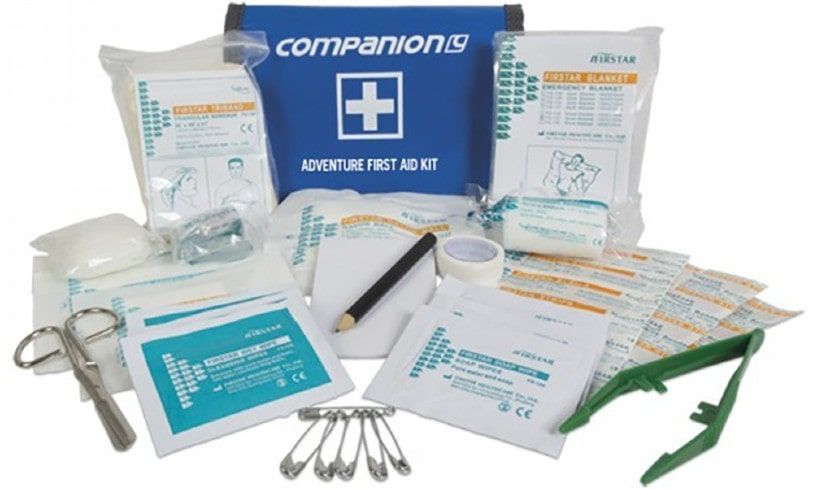
Best For Hiking
Here is a lightweight first aid kit that is comprehensive and designed for trekking, indeed this could be the best backpacking first aid kit you can buy. It comes in at just under half the weight of the St John, with more variety of contents – including antiseptic wipes for cleaning wounds.
As well as all the basics like the St John, the Companion first aid kit also includes a CPR facemask. It achieves its lightweight by having only a minimum of each content type, meaning there is only one of each type of bandage for example.
Customer reviews are all very positive as it's very light and comprehensive with easy to use instructions.
This first aid kit is best for those who like to travel light and fast and can be used for a longer trip of several days to weeks. But due to its limited supplies, once things go wrong and it's used multiple times, you may want to purchase a new one or re-stock the used materials.
Bob Cooper Survival Kit
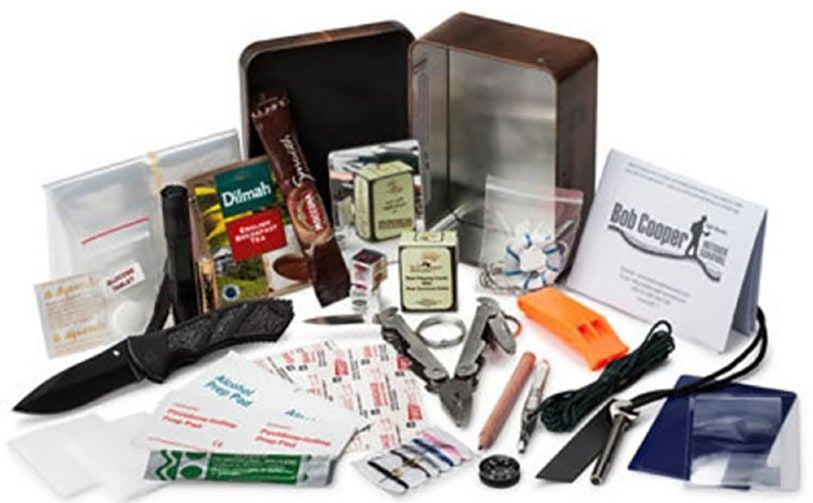
Best For Remote Backpacking
When it comes to a comprehensive first aid and survival kit, look no further than the Bob Cooper. Almost the same weight as the St John, the Bob Cooper is exactly what you need for a remote bushwalking or backpacking first aid kit.
It has all the basics for first aid including plasters, swabs, a scalpel and first aid and survival instructions to cover minor medical issues - its focus really is on survival in the bush.
Additional included Items like a multi-tool, torch, fishing equipment, compass, fire starters etc are more useful in a survival situation than a medical one.
Customer reviews are all very positive and this is an excellent survival kit, however, as a first aid kit, it is a little bare.
Additionally packing some bandages and a few other select items will elevate this whole kit. This is best used for people who like to go very remote and may require more than just a first aid kit if something goes wrong.
FastAid Modular Survival Pack First Aid
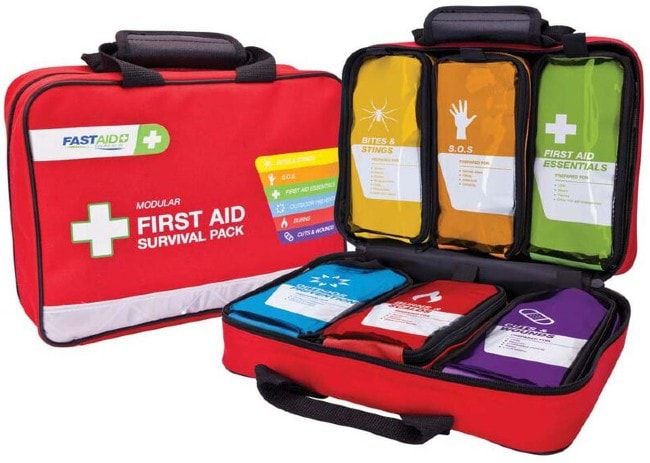
Most Comprehensive Option
If you want a first aid kit that is incredibly comprehensive and has loads of supplies then look no further than the FastAid Modular Survival Pack First Aid. Like the Bob Cooper, this kit has items for both survival and first aid, but this one has more of a first aid focus.
All the essentials are included and more. Not only is it colour codes for quick and easy use, but it also includes aloe vera, a compass, insect repellent and even duct tape. This kit contains over 300 items while the rest on this list are between 30-60 items each.
Customer reviews are all highly positive and while this does not include items like fishing gear and a multi-tool like the Bob Cooper, these are often items you would buy and carry separately anyway.
This kit is best used by larger groups, especially if they can share the load around, as this kit adds a lot of weight if carried by one person the whole trip.
What To Look For When Buying A First Aid Kit
When looking to buy a first aid kit, it’s a good idea to ensure it does what you need it to. The following areas are what you should pay attention to.
Variety Of Components
You want your first aid kit to have enough components to cover any eventuality. Most average around 30 to 60 components, but some like the FastAid can have over 300.
Basic Categories Covered
You also want to check that the first aid kit has items across different categories of injury or illness such as: anti-septics, injury treatment, bandages, instruments and medicines.
Organisation
A first aid kit that can roll out like the Companion first aid kit or have modules for each category is much easier to use and maintain. All the items will be in their designated place each and every time you open the pack. This is essential when an accident occurs and you are in a hurry.
Quality
Like anything in this world – you get what you pay for. It should come as no surprise that a more expensive and comprehensive first aid kit should have higher quality items.
Information
Pretty much all the first aid kits come with information or instructions on how to use them. The Bob Cooper and FastAid have more comprehensive instructions on a range of medical and survival information than others. The amount of information you may need also depends on your previous knowledge.
Hiking First Aid Kits FAQ
What should be in a hiking first aid kit?
As we discussed in the guide above, you should have a comprehensive first aid kit that covers all your needs.
The size and number of the same items (20 plasters verses 4) can indicate how long you can use it for without a re-stock. At a minimum, you would want bandages, anti-septic, band-aids or plasters and scissors or a knife.
Should you take a first aid kit hiking?
This is an individual's choice based on how long you are going, how far from the closest civilization you will be going and who you are going with. Going for a two-hour hike in some bush not far from home? Probably not. Heading out for a week in the remote corner of the country? Obviously yes.
Whether it's a life-threatening encounter with a snake, or just simply dealing with blisters or a leech, a good first aid kit will likely come in handy at some point.
Is it cheaper to buy a first aid kit or make your own?
This is a good question from two perspectives: price and tailored content. If you have some training or knowledge on first aid, you may want to go and purchase the items you need and leave out things you don't think are relevant.
By making your own first aid kit you can include things like painkillers and anti-histamines that will not come standard in any commercial kits.
Vaseline, lighters, extra bandages and even energy or dehydration sachets are all great additions that won't come standard. If you do make your own, it's a good idea to photocopy or print out some information on first aid to include.
By shopping at a bargain shop for a Tupperware or soft case, cheap medication, bandages and other first-aid essentials you should be able to make a cheaper tailored first aid kit than the commercial ones.
It has the added bonus of you purchasing all the items so you know exactly what is inside it. The Australian government have some good advice on what to include in a first aid kit.
How much should a backpacking first aid kit weigh?
How long is a piece of string? It all depends on what you are up to. Long hard lightweight trekking? A light one like the Companion will suit you best.
Driving to a campsite with kids? The FastAid Survival First Aid would be the best. If carrying it yourself, aiming for under half a kilo is the best general advice.
Remember that you'll be carrying other gear like your backpacking tent, poles, hydration pack and maybe even cookware like a hiking stove and pan. Every gram matters!
Final Thoughts
First aid kits really are an essential part of heading into the bush. Along with your PLB, they are your most important bit of safety equipment.
We are well known for creepy crawlies, snakes and other dangerous animals, but it’s often the distance from the nearest help that is a big issue in Australia. This can turn a simple injury like a twisted ankle into a big deal.
For pure hiking, the Companion kit is the best balance between quality/quantity of supplies and weight.
The Bob Cooper, with some extra bandages thrown in, is a great composite style kit for anyone who likes to head right out there, but to be fair – all the kits above have their uses and the most important thing is that you have one in the first place.
This article may contain affiliate links. I will earn a commission if you choose to purchase a product or service after clicking on my link. This helps pay for the cost of running the website. You will not be disadvantaged in any way by using my links.
Note that while every effort is made to ensure the accuracy of the information on this page, there may sometimes be errors. Check all specifications with the manufacturer before purchasing any product.


